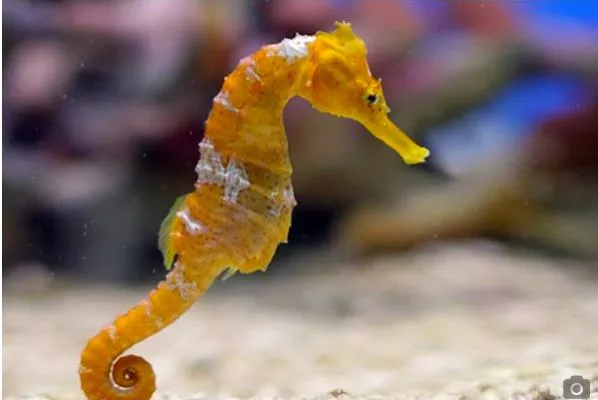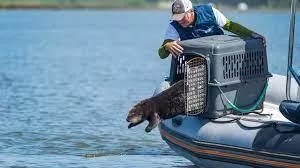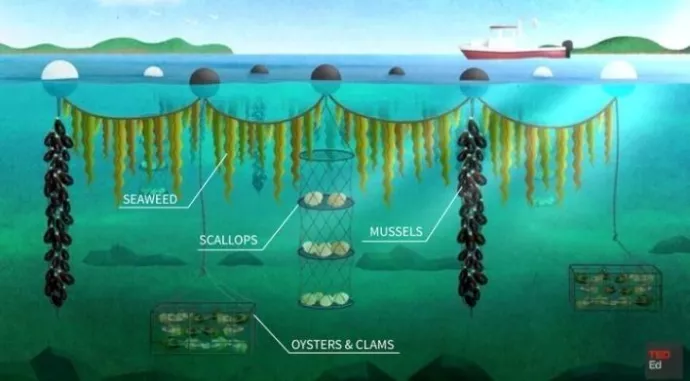2021-2022
These are the top blog posts from the Marine Ecology class, BIO376. Congratulations to the authors!
Afzia Anees
Global Seahorse Overexploitation: Can it be Stopped?

Seahorses are charming marine creatures that roam coastal waters along different continents (Pollom et al., 2021). With a horse-shaped head, colour-changing skin, and a small prehensile tail, seahorses have caught the hearts of many people, who are intrigued by their unique shape (Porter et al., 2013). They are one of the few known species where males give birth instead of females, and one of few marine species that aren’t good at swimming (Porter et al., 2013; Planas et al., 2020). They have been a subject of interest for marine biologists due to their peculiar lifestyle. However, despite their popularity, seahorses are disappearing from the ocean at an alarming rate, as they are caught as bycatch and sold to companies to be used in medicine, as aquarium fish and more (Choo and Liew, 2005). This post focuses on bycatch rates and conservation strategies being employed to stop the mass decline in global seahorse populations.
Adriano De Rose
Dugong Du’gone’: Sea Grass Degradation a Threat to the “Cows of the Sea”
Known informally as a sea cow, the dugong (Dugong dugon) is part of the Sirenia, an order of aquatic, herbivorous mammals that inhabit swamps, rivers, estuaries, marine wetlands, and coastal marine waters. They obtain the name sea cow as they are primarily found peacefully grazing on seagrass, akin to behaviour a cow would exhibit on land. Currently, the dugong, part of the family Dugongidae, is the only other extant family within Serenia asides from the Trichechidae, the manatees that they are often confused for (Berta et al., 2015). Dugongs differ from their manatee relatives in the shapes of their snouts, with a more agile upper lip for the consumption of sea grass, in their body size, as they are smaller than the manatee, and in tail shape, as dugongs have flukes whereas manatees have paddle-shaped tails (Denny, 2019). Dugongs are also the only plant-eating mammal that live out their lives in the sea and tidal reaches of rivers unlike the three species of manatee, who make use of bodies of freshwater (Marsh, 2018).
Sydney Miller
Carbon Sequestration Job: Kelp Wanted, Sea Urchins Need Not Apply!

“Where’s my drink? My Diet Dr.Kelp?! Don’t tell me you forgot my drink (Hillenburg, 1999)!” While this Bikini Bottom customer may have had a slight overreaction to Spongebob forgetting his drink, he certainly is right about one thing: we can’t forget the (Diet Dr.) kelp! Kelp forests are unassuming ecosystems doing more than meets the eye; they support high levels of both primary and secondary production, form structurally diverse microhabitats, and aid in buffering coastal erosion (Steneck et al., 2002). Perhaps most importantly, kelp forests are a significant carbon sink, helping to sequester excess anthropogenic carbon and combat climate change (Filbee-Dexter & Wernberg, 2020). However, these forests face many threats, with the most significant being herbivory (Estes et al., 2010). In particular, purple sea urchins (Stronglyocentrotus purpuratus) have developed a real taste for kelp, and are chowing down across mid-latitude coasts faster than you can say she sells sea shells by the sea shore (Pearse, 2006). Not all hope is lost though, as an unlikely hero provides an otter-ly adorable solution to urchin-driven kelp forest loss.
Lucia Oram
How to Kill a Killer: Controlling the Effects of the Murderous Crown-of-Thorns Starfish on Reef-Building Coral Communities
Despite being naturally beautiful and aesthetically pleasing, coral reefs are fundamental ecosystems that not only provide numerous economic and cultural functions for humans, but also play imperative roles throughout the ocean. The coral reef structure serves as the basis for one of the highest and most productive ecosystems in the world, and accordingly, must be preserved in order to protect tropical marine life around the globe (Maragos, 1996). Unfortunately, coral reefs have been progressively declining as the result of multiple anthropogenic factors, including water pollution from terrestrial run-off, overfishing and coastal development. However, there is an even more prominent villain to account for roughly forty-two percent of coral mortality in the Great Barrier Reef, known as the Crown-of-Thorns starfish (De’ath et al., 2012). Luckily, there are accessible models that have been proven to manage and reduce the outbreaks of these killer predators.
Sufyan Shaikh
Turning to the Ocean to Feed Humanity

According to data from the UN’s Food and Agriculture Organization (FAO), global food production accounts for approximately 50% of all habitable land use (see Figure 1) (Ritchie, 2019). Despite this immense amount of land dedicated to agriculture, food scarcity and insecurity has been an important concern for economists and policymakers alike. This concern is exacerbated as one observes population growth and projects what future global population numbers may look like. Numerous calls advocating for increasing global production have been made, and some sources suggest food production needs to double to sufficiently feed the 9 billion people that will inhabit Earth in 2050 (Alexandratos et al., 2006). While others suggest aiming for a 50% increase in food production by 2030 (Rosengrant et al., 2006). However, simply growing more crops and rearing more livestock is not a complete solution. The World Resources Institute estimated that in 2016 agricultural activities accounted for approximately 18% of global greenhouse gas (GHG) emissions, a year when GHG emissions totaled 49.4 billion tonnes of carbon dioxide equivalents (CO2eq) (see Figure 2) (Ritchie, 2020). A very bleak picture has been painted thus far, and it is evident that sustainable agricultural practices need to be used to avoid overwhelming the planet. However, a partial solution may lie in the 71% of the world that is covered by water (Ritchie, 2019).
Mishita Dharia
North Atlantic Right Whales: Can we Hope to ‘Disentangle’ them from their Status of Most Endangered Whale?
